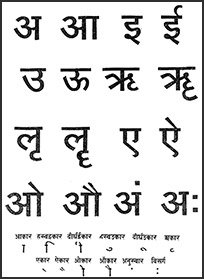Rishyadi, Ṛśyādi: 2 definitions
Introduction:
Rishyadi means something in Hinduism, Sanskrit. If you want to know the exact meaning, history, etymology or English translation of this term then check out the descriptions on this page. Add your comment or reference to a book if you want to contribute to this summary article.
The Sanskrit term Ṛśyādi can be transliterated into English as Rsyadi or Rishyadi, using the IAST transliteration scheme (?).
In Hinduism
Vyakarana (Sanskrit grammar)
Source: Wikisource: A dictionary of Sanskrit grammarṚśyādi (ऋश्यादि).—A class of words headed by the word ऋश्य (ṛśya) to which the taddhita affix क (ka) is added in the four senses prescribed in the rules IV. 2.67-70; e. g. ऋश्यकः, न्यग्रोधकः (ṛśyakaḥ, nyagrodhakaḥ) etc. cf. P.IV.2.80.

Vyakarana (व्याकरण, vyākaraṇa) refers to Sanskrit grammar and represents one of the six additional sciences (vedanga) to be studied along with the Vedas. Vyakarana concerns itself with the rules of Sanskrit grammar and linguistic analysis in order to establish the correct context of words and sentences.
Languages of India and abroad
Sanskrit dictionary
Source: Cologne Digital Sanskrit Dictionaries: Monier-Williams Sanskrit-English DictionaryṚśyādi (ऋश्यादि):—[from ṛśya > ṛśa] m. Name of a gaṇa, [Pāṇini 4-2, 80.]
Sanskrit, also spelled संस्कृतम् (saṃskṛtam), is an ancient language of India commonly seen as the grandmother of the Indo-European language family (even English!). Closely allied with Prakrit and Pali, Sanskrit is more exhaustive in both grammar and terms and has the most extensive collection of literature in the world, greatly surpassing its sister-languages Greek and Latin.
See also (Relevant definitions)
Full-text (+17): Parivamsha, Parigudhaka, Sthaulaka, Nidhanaka, Nibandhaka, Uttarashman, Nyagrodhaka, Asani, Khadiraka, Parivritta, Parivrittaka, Parivamshaka, Nivasaka, Vibaddhaka, Nivataka, Anadutka, Araduka, Vibaddha, Nibandhanaka, Asanika.
Relevant text
No search results for Rishyadi, Ṛśyādi, Rsyadi; (plurals include: Rishyadis, Ṛśyādis, Rsyadis) in any book or story.